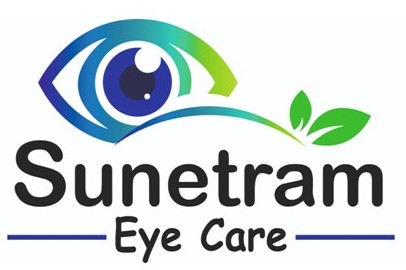Our Services
Cataract remains the leading cause of reversible blindness in India. We, at Sunetram Eye Care, strive to offer a safe, effective and painless experience of cataract surgery, using cutting-edge technology with world-class infrastructure and assure a high standard of care.
Q. How does cataract form?
In the healthy eye, the clear natural crystalline lens allows light to be focused clearly on the retina. With aging mostly, this lens loses its transparency and gradually becomes clouded, thereby impairing vision.
Q. What are the causes?
Although most cataract formations are related to aging, there are other types of cataract too:
- Secondary Cataract- Cataracts that form due to other health problems, such as diabetes or steroid abuse or after surgery for other eye problems, such as glaucoma.
- Traumatic Cataract- Cataracts can develop after an eye injury, sometimes years later.
- Congenital Cataract- Some babies are born with cataracts or develop them in childhood, often in both eyes. These cataracts may be so small that they do not affect vision. If they do, it may need to be removed with a cataract operation and should be replaced with an artificial lens.
- Radiation Cataract- Cataracts can develop after exposure to some types of radiations.

Q. Who is at risk for cataract?
The risk of cataract increases with age. Other risk factors include:
- Certain diseases such as diabetes
- Injudicious use of medicines such as steroids
- Personal behavior such as smoking
- The environment such as prolonged exposure to sunlight
Q. What are the symptoms associated with cataract?
Cataract is characterized by a painless, progressive decrease in vision. Apart from this, patients may experience increased glare while driving at night or reading in dim illumination, difficulty in differentiating objects at a distance, and the need for frequent change of glasses.
Q. How is cataract detected?
Cataract is detected through a comprehensive eye examination
- Visual Acuity Test: The eye chart measures the vision for both distance and near vision, quantifies the visual loss and aids in grading the cataract.
- Dilated Eye Examination: Drops are instilled in the eyes to widen or dilate the pupils allowing detection and grading of cataract. Moreover, the retina or the nerve of the eye is also examined for signs of damage or other eye problems. The effect of the dilating drops lasts for a couple of hours, during which time the patient may experience blurring of vision.
Q. When does your cataract require treatment?
Cataract surgery can be performed at any stage once daily activities of an individual starts getting hampered. With the advent of latest technology, operation can be performed in a safe and effective manner even in the early stages. More advanced and harder cataracts are associated with increased incidence of complications, hence patients should not wait for the cataract to mature.
Q. What are the various treatment options?
Corrective glasses can be prescribed in early stages. Surgery is the only definitive treatment for visually significant cataracts.
The various surgical options available are as follows:
- Extra Capsular Cataract Extraction- Done for complicated cases. Requires stitches, has a longer recovery period.
- Small Incision Cataract Surgery- Requires a small 5mm incision, stitchless, has fast wound healing. Lens is removed manually and intra-ocular lens (IOL) is put in its place. Better option for very hard cataracts.
- Phacoemulsification- Micro Incision Cataract Surgery- Requires a very small incision of about 2-3 mm, stitchless, has fast wound healing. The nucleus is emulsified into small pieces and removed. A foldable lens is placed in the eye. surgery. Can be done under topical anaesthesia without injection.
Types Of Intraocular Lenses (IOL)
- Monofocal IOL- A majority of intraocular lenses implanted are monofocal lenses. They focus light from a single distance. Normally distant objects are clear and one requires glasses for reading. They are either rigid non foldable or foldable. The foldable lenses can be inserted through a small wound allowing faster visual recovery and reduced postoperative discomfort.
- Toric IOL- In certain situations, the patient may have a high cylinder or preoperative bend of the cornea. Monofocal lenses are unable to compensate for this, so after surgery, patient requires glasses for distance vision also in addition to a reading power. Toric IOLs can correct this cylindrical power, thereby improving distance vision.
- Multifocal IOL- Multifocal lenses have different segments which focus light rays from various distances onto the retina. This affords correction for near, intermediate and distant vision to the patient. Most often, patient can manage his activities without glasses for all distances, but may complain of haloes and glare while driving at night.
